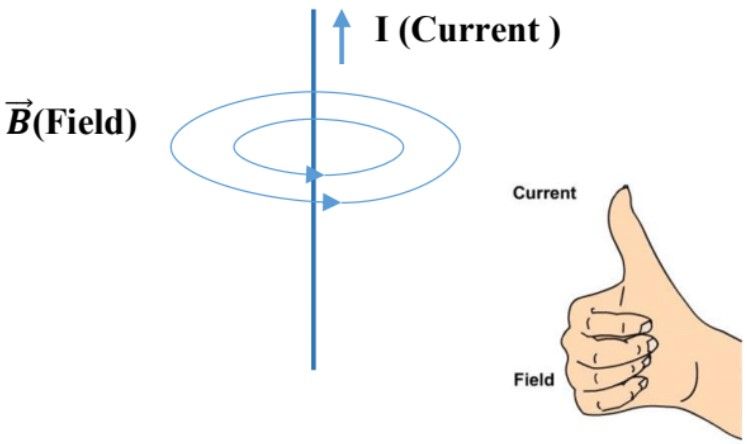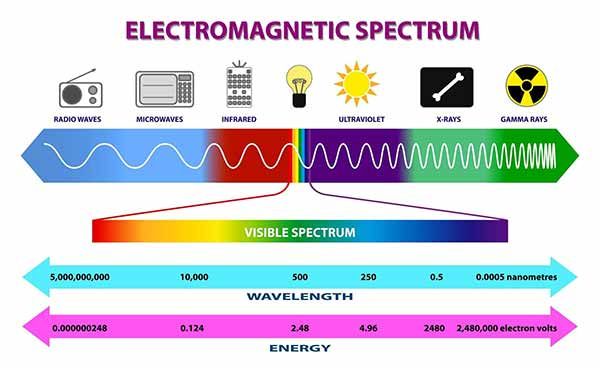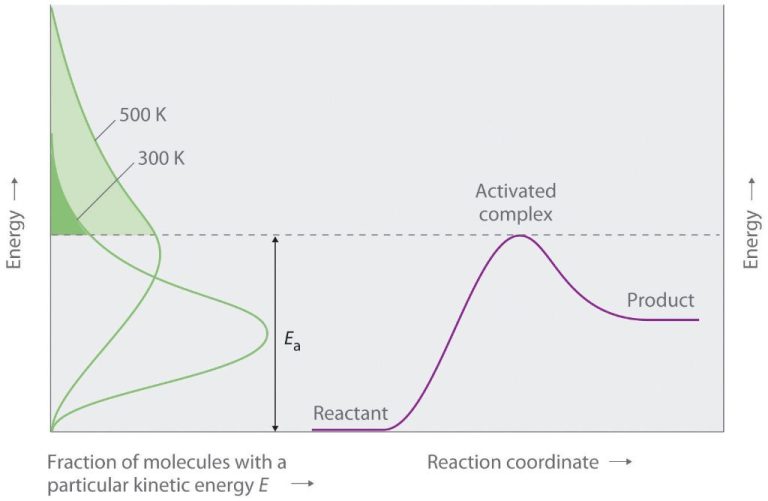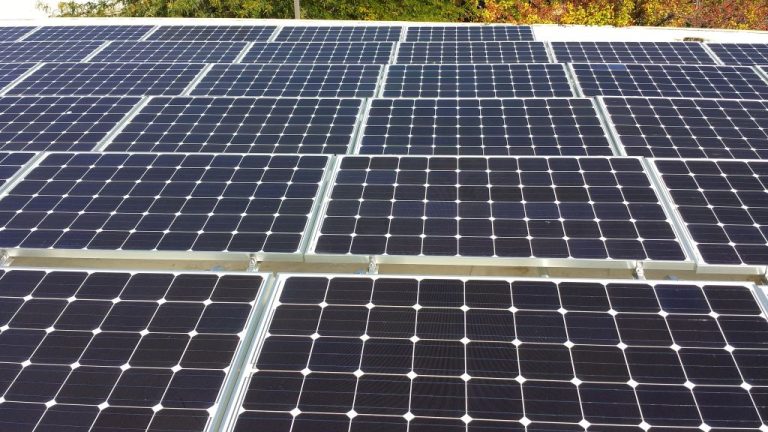Can Electric Current Produce Magnetic?
Electromagnetism refers to the physical interaction between electricity and magnetism. It describes how electric currents or electric fields can generate magnetic fields, and vice versa. The relationship between electricity and magnetism was first discovered in 1819 by the Danish scientist Hans Christian Ørsted, who noticed that an electric current in a wire created a circular magnetic field around the wire. This close connection between electricity and magnetism was further elaborated into a unified theory called electromagnetism.
The principles of electromagnetism describe how charged particles generate electric fields, which in turn can influence magnets and magnetic materials. Changing electric fields generate changing magnetic fields, and vice versa. This interplay allows various technologies, like motors and generators, to convert electric energy into mechanical work and back again. Electromagnetism plays a fundamental role in modern technology and lies at the heart of electrical and electronic devices we use everyday.
Electric Currents
Electric current is the organized flow of electrons through a conductor. Electrons are tiny negatively charged particles that form a part of all atoms. In conductors like copper wire, some electrons are loosely bound and can move freely when voltage is applied across the wire. Voltage is the potential energy required to move electrons between points in a circuit.
When voltage is applied, the electrons gain kinetic energy and start moving through the wire. The flow of electrons makes up the electric current. As electrons move, they collide with atoms in the conductor, transferring energy in the form of heat. This gives electrical energy the ability to produce light, heat, sound and mechanical motion.
The unit of electric current is Ampere or Amp, which measures the number of electrons that pass through a point in the circuit per second. For direct current or DC, electrons always flow in the same direction from negative to positive. Batteries and solar cells produce direct current.
For alternating current or AC, electrons change direction periodically. The voltage driving the current alternates in polarity from positive to negative. AC is produced by generators at power stations. Most household appliances run on AC because it is more practical to transmit over long distances.
Magnetism
Magnetism is a phenomenon that arises from electric current or other sources of moving charges. It manifests as both attractive and repulsive forces between objects. This force arises from the magnetic fields that are created by the motion of charges. Magnetic fields are invisible but can be detected by the force they exert on magnetic materials.
There are two main types of magnets: permanent magnets and electromagnets. Permanent magnets, like the ones found on your refrigerator, maintain a persistent magnetic field on their own without requiring an external power source. They are composed of ferromagnetic materials like iron, nickel, and cobalt that have aligned magnetic domains resulting in a net magnetic field.
Electromagnets on the other hand generate a temporary magnetic field only when electric current flows through them. They are made by coiling wire around a ferromagnetic core. When current passes through the coiled wire, it generates a magnetic field. This field magnetizes the core, creating a magnet. The magnetic field disappears when the current stops. Electromagnets can be easily turned on and off by controlling the electric current.
Electromagnetism
Electromagnetism refers to the relationship between electricity and magnetism. In the early 1800s, Hans Christian Ørsted discovered that electric currents create magnetic fields. This was further explored through experiments by Michael Faraday and others.

One of Faraday’s key discoveries was electromagnetic induction. He found that moving a magnet near a wire loop causes an electric current to flow in the wire. This occurs because the changing magnetic field creates an electric field in the wire loop, which drives the electrons to move.
Faraday also discovered that moving a wire loop near a magnet or changing the magnetic field through the loop induces a current. In both cases, motion is required to produce the current. This demonstrated a clear link between electricity and magnetism.
James Clerk Maxwell later generalized these experimental findings into a set of equations. These equations, known as Maxwell’s equations, demonstrate that electric and magnetic fields are fundamentally interrelated. An changing electric field generates a magnetic field, while a changing magnetic field generates an electric field.
In summary, the motion of electric charges like electrons creates circulating electric currents, which in turn generate magnetic fields. Accelerating charges or changing magnetic fields also induce electric fields. This interplay between electricity and magnetism is known as electromagnetism.
Electromagnets
Electromagnets generate magnetic fields using electric currents. When an electric current flows through a conductor like a copper wire, it creates a magnetic field around the wire. The strength of this magnetic field depends on the amount of current flowing through the wire. The more electric current applied, the stronger the magnetic field becomes.
To create a more powerful magnetic field, electromagnetic coils are used. Electromagnetic coils are wire wrapped around a metal core like iron. When current passes through the coiled wire, the core becomes magnetized and creates a concentrated magnetic field. The strength of the electromagnet depends on the number of wire coils, the current flowing through them, and the material properties of the core. More coils and more current create a stronger magnetic pull. Using an iron core rather than air also multiplies the magnetic field strength drastically. Adjusting these factors allows creation of customizable electromagnets with controllable magnetic power.
Applications
Electromagnets have many useful applications in everyday life:
One of the most well-known applications of electromagnets is in MRI (magnetic resonance imaging) machines used for medical purposes. The MRI machine uses a powerful magnet to produce detailed images from inside the human body.
Electromagnets are also used in motors for powering various devices. Direct current (DC) motors operate by running an electric current through a coil to induce a magnetic field, which causes the motor to spin. Alternating current (AC) motors function on the same principle but alternate the direction of the current to rotate the motor.
In scrapyards and manufacturing facilities, powerful cranes are often equipped with electromagnet lifters capable of lifting and transporting heavy metal objects like cars. The operator can turn the magnet on and off as needed to pick up and release the objects.
Electromagnets are also employed for various separation processes, such as removing heavy metal impurities from food or separating aluminum cans from other recyclables. The magnets attract the desired metals, while allowing other materials to pass by unaffected.
Additional common uses include relays, door bells, speakers, microphones, magnetic locks, and more. Electromagnets enable many technologies that people rely on daily.
Maxwell’s Equations
Maxwell’s equations represent a set of four mathematical equations that relate the electric and magnetic fields. These equations describe the fundamentals of electromagnetism based on observable experimentally-verified laws in physics.
The equations show that electric and magnetic fields are not separate entities, but are closely connected aspects of the same electromagnetic force. Specifically, Maxwell’s equations demonstrate that electric fields can produce a magnetic field, as seen in electromagnets and AC current. Magnetic fields can also induce electric fields, as shown in electric motors and generators.
The unification of the electric and magnetic fields through Maxwell’s equations was a groundbreaking discovery in physics. It showed that light itself is an electromagnetic wave, paving the way for tremendous advances in technology and our understanding of the universe.
Overall, Maxwell’s equations underpin all electromagnetic phenomena from radio waves to visible light. They represent the culmination of over a century of research into electricity and magnetism, consolidating the key laws into a consistent and comprehensive theory.
Direct Current Motors
Direct current (DC) motors are a practical application of electromagnetism that convert electrical energy into mechanical energy. Inside a DC motor are coils of wire that act as electromagnets. These electromagnets are arranged around a rotatable armature. By supplying electricity from an outside DC power source to the electromagnet coils, a magnetic field is generated. The polarities of the electromagnet coils are arranged so that the magnets are attracted and repelled from each other, causing the armature to spin.
As the armature spins, it comes into contact with a split metal ring called a commutator. The commutator reverses the direction of the electric current into the electromagnet coils, so the poles switch and continue pushing the armature. In this way, the continuous reversing magnetic polarity from the electromagnets causes the armature to keep spinning in the same direction. The rotational mechanical energy created can then be harnessed to perform useful work, like turning the wheels of an electric vehicle.
Alternating Current
Alternating current (AC) periodically reverses direction, unlike direct current (DC) which flows in only one direction. This means that AC voltage rises and falls in a sine wave pattern. As the AC current flows through a wire, it generates a changing magnetic field around it. The changing current causes the magnetic field to expand and collapse in a continuous cycle.
Transformers work on the principle of electromagnetic induction using AC current. When AC passes through the transformer’s primary winding, it induces a varying magnetic flux in the core which then induces a varying electromotive force in the secondary winding. This allows transformers to increase or decrease AC voltages for different applications.
Alternating current is also used in AC electric motors. The rotating magnetic field generated by the alternating current in the stator windings causes the rotor to spin in synchronization. This rotation mechanism allows AC motors to provide continuous rotary power for industrial applications as well as home appliances.
Conclusion
Electricity and magnetism are intrinsically linked and this deep relationship is called electromagnetism. We’ve explored how electric currents themselves can create magnetic fields, which is the basic working principle behind electromagnets. Through Maxwell’s equations, we learned how fluctuating electric fields can create magnetic fields and vice versa.
Some key principles we covered:
- Moving electric charges create magnetic fields – this allows us to create electromagnets
- Changing magnetic fields create electric fields – this allows generators to produce electricity
- The two fields are interdependent and linked through Maxwell’s equations
- This electromagnetism principle drives electric motors, generators, transformers and many other devices
By understanding the intrinsic relationship between electricity and magnetism, we gain profound insight into how our modern world functions. Our deep exploration illuminated this key scientific linkage that powers so much of our daily lives.






